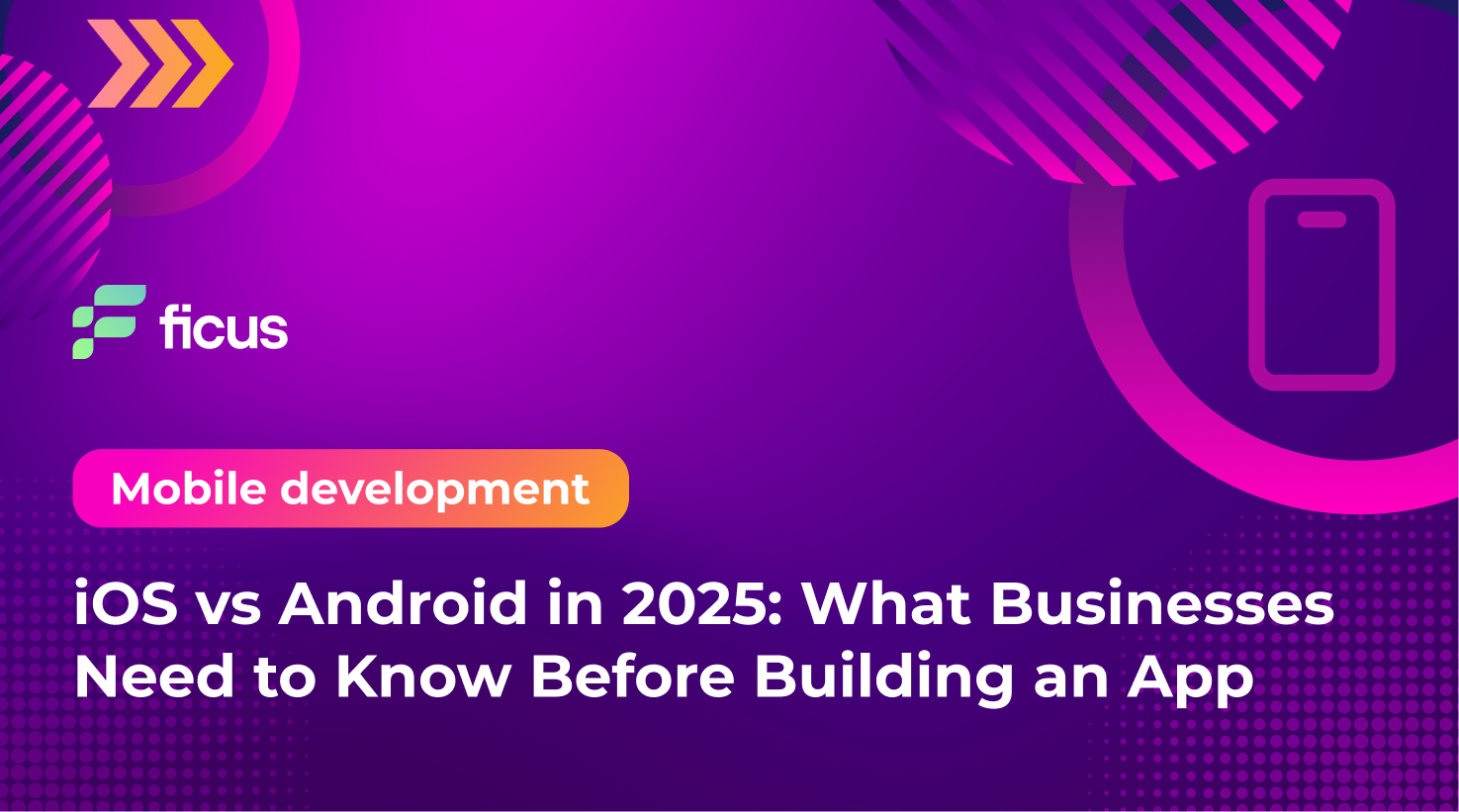Choosing the right mobile platform is one of the first — and most critical — decisions for any business developing a mobile application. With over 98% of the global market dominated by iOS and Android, understanding their differences is essential to aligning your product strategy with business goals.
iOS offers a premium ecosystem with stronger monetization potential and consistent UX standards, while Android brings unmatched reach, device variety, and flexibility in development and release cycles. But in 2025, platform choice is no longer just technical — it’s a strategic move shaped by your target audience, market, app type, and monetization model.
This article explores how iOS and Android compare across key business criteria in 2025, helping you decide which platform (or both) is the right fit for your goals.
- Androi leads globally in user base, while iOS dominates in monetization.
- iOS users tend to have higher incomes and spend more in-app.
- Android offers broader reach and device diversity, especially in emerging markets.
Market Share and Global Reach
Android continues to dominate the global smartphone market, holding over 70% of total users in 2025. iOS maintains a strong presence in premium markets like the US, Canada, Western Europe, and Japan, capturing around 28–30% of the market.
Despite its smaller share, iOS consistently outperforms Android in app revenue generation, especially in markets with high purchasing power.
Development Ecosystem: Codebase, Tools, and Deployment

Apple tightly controls its ecosystem, which results in higher consistency across devices but also stricter review processes and hardware limitations. Android, being open-source and used by multiple manufacturers, offers wider device access but more testing complexity.
User Demographics and Behavior
Spending Power: iOS users have higher average income, making them more likely to pay for apps or subscriptions.
Geography: Android dominates in Asia, Latin America, Africa, and Eastern Europe. iOS is strong in North America, Australia, and parts of Europe.
Loyalty: Android has slightly higher platform retention (91% vs iOS’s 86%) but both maintain strong user bases.
Notification Engagement: Android users tend to engage more with push notifications and allow higher opt-in rates.
Monetization: App Store Performance in 2024

iOS apps continue to earn nearly twice as much per user compared to Android. If monetization through subscriptions, IAPs (in-app purchases), or premium models is your core strategy, iOS should not be overlooked.
AI Capabilities and Privacy Priorities
In 2025, both platforms integrate AI—but with different philosophies:
*Apple (iOS):
-Prioritizes on-device processing to ensure user privacy.
-Relies on Apple Intelligence, Siri, and CoreML to deliver personalized, privacy-preserving features.
*Google (Android):
-Leverages cloud-powered AI tools for real-time suggestions, photo enhancement, productivity features, and more.
-Offers deeper integration with third-party AI assistants and apps.
-For apps that rely heavily on AI-driven personalization, the privacy model and data processing approach of each platform will significantly affect your development roadmap.
Strategic Considerations for Businesses

Modern frameworks like Flutter, React Native, and Kotlin Multiplatform now allow businesses to launch apps for both platforms simultaneously, often at 60–70% of the cost of building two separate native apps.
Conclusion
In 2025, the iOS vs Android debate is less about which is better — and more about what your users need, what your business model supports, and how your technical team can deliver efficiently.
For apps targeting high-spending, privacy-conscious users, iOS still leads.
For apps requiring scale, flexibility, or lower device costs, Android offers unmatched reach.
Why Ficus Technologies?
At Ficus Technologies, we help companies build high-performing mobile solutions — whether native, cross-platform, or hybrid. Our team brings experience in developing scalable iOS and Android applications tailored to each client’s market, technical needs, and long-term goals. From MVP validation to global app deployment, we guide you through every step — platform strategy included.
If your audience is in the US or you plan a paid model — start with iOS. For global reach or MVP testing — Android is often the better first step.
Yes. Frameworks like Flutter and Kotlin Multiplatform have matured and now power apps from Google, BMW, Alibaba, and others. They’re ideal for launching quickly on both platforms with fewer resources.
Apple’s App Store has stricter review processes but higher-paying users. Google Play is more flexible and has wider global reach, especially in lower-income markets.








